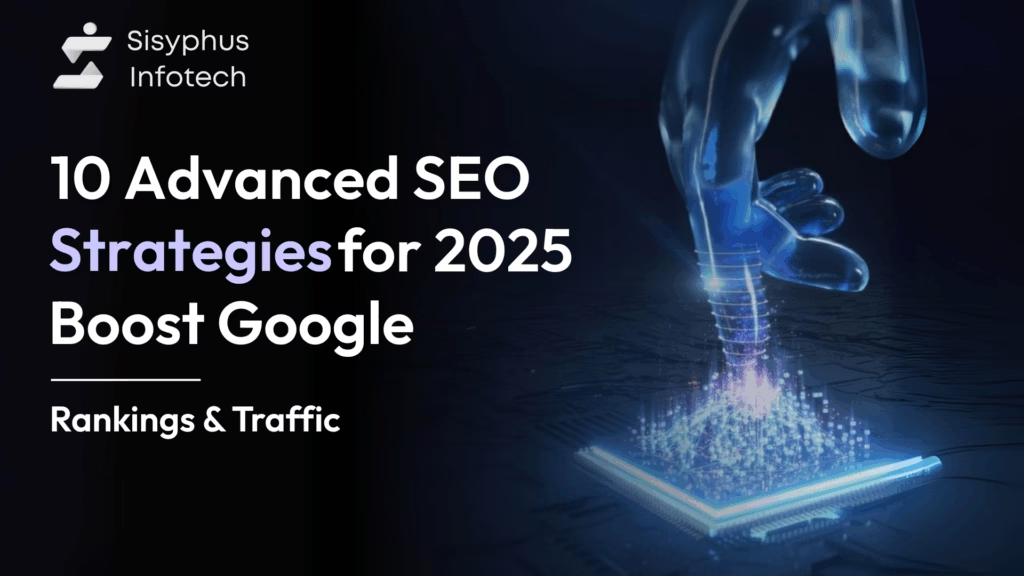10 Advanced SEO Strategies for 2025 – Boost Google Rankings & Traffic
10 Advanced SEO Strategies for 2025 – Boost Google Rankings & Traffic In 2025, having a website isn’t enough. To rank higher on Google, attract the right audience, and grow your business, you must implement the best SEO strategies. This article covers 10 proven SEO tactics, including on-page SEO techniques, off-page SEO strategies, keyword optimization tips, technical SEO checklists, and local SEO for small businesses. These methods will help you boost website traffic, improve rankings, and increase conversions. 1. Keyword Optimization – The Foundation of SEO Keyword optimization is the foundation of any successful SEO strategy. It helps search engines understand your website’s content and ensures that the right audience finds your pages. Without proper keyword research and placement, even the best content may fail to reach potential visitors. By targeting the right keywords, you can increase organic traffic, improve rankings, and attract users who are most likely to engage with your content. This makes your SEO efforts more effective and measurable. To optimize your keywords effectively: Conduct thorough keyword research using tools like Google Keyword Planner, Ahrefs, or SEMrush. Identify high-traffic, relevant keywords that your target audience searches for Focus on long-tail keywords, such as “how to rank higher on Google fast”, which often have lower competition and attract qualified visitors. Use keywords naturally in titles, meta descriptions, headers, and the first 100 words of your content. Proper keyword optimization not only improves search rankings but also keeps your content readable, engaging, and user-friendly. 2. High-Quality Backlinks – Build Authority Backlinks are one of the most powerful off-page SEO strategies, as they signal to Google that your website is trusted and authoritative. To build high-quality backlinks: Publish guest posts on reputable websites in your niche. Create link-worthy content such as guides, infographics, and case studies. Use broken link building to replace outdated links with your content. Use keywords naturally in titles, meta descriptions, headers, and the first 100 words of your content. High-quality backlinks not only improve your search rankings but also drive referral traffic from other trusted sites. 3. Content Quality – Engage and Rank Higher In 2025, Google values helpful, in-depth content that fully answers users’ questions. To create content that ranks: Write long-form articles (2,000+ words) covering all relevant aspects of a topic. Include visuals, charts, and examples to enhance understanding and engagement. Update older posts regularly with fresh information, updated links, and latest statistics. High-quality content improves dwell time, encourages shares, and increases the likelihood of earning backlinks. 4. Page Speed – Improve Load Time & UX Website speed is a critical ranking factor that affects both user experience and SEO. Slow websites lead to higher bounce rates and lower rankings. To optimize page speed: Compress images using WebP format or other lightweight formats. Minify CSS, JavaScript, and HTML files to reduce loading times. Use a Content Delivery Network (CDN) to deliver content faster globally. Tip: Aim for a load time under 3 seconds, as even a 1-second delay can reduce conversions by up to 7%. 5. Mobile-Friendliness – Optimize for Mobile With over 60% of searches coming from mobile devices, mobile optimization is no longer optional. A mobile-friendly site improves rankings and user engagement. To ensure mobile-friendliness: Use a responsive design so your website adapts to any screen size. Make buttons and fonts readable without zooming. Test your site with Google’s Mobile-Friendly Test Tool to identify and fix issues. A fast, responsive mobile site ensures visitors stay longer and navigate easily. 6. Technical SEO – Crawl, Index & Structure Technical SEO ensures that search engines can crawl, index, and understand your website efficiently. Key technical SEO practices include: Submitting an XML sitemap to Google Search Console. Fixing broken links (404 errors) and redirect chains. Implementing schema markup such as FAQ, HowTo, or Product schema to enhance rich snippets. Technical SEO improves site visibility, ensures smooth crawling, and enhances rankings. 7. Local SEO – Attract Nearby Customers If you run a local business, local SEO helps attract nearby customers searching for your products or services. To optimize for local SEO: Optimize your Google Business Profile with up-to-date information, photos, and reviews. Build NAP (Name, Address, Phone) citations in trusted directories. Use location-specific keywords, e.g., “SEO services in Kolkata”. Local SEO improves your visibility in local search results and maps, driving more qualified foot traffic. 8. Content Marketing – The Art of Promotion Publishing content alone isn’t enough; promoting it is crucial for ranking. Effective content marketing strategies include: Sharing blogs on social media platforms like LinkedIn, Facebook, and Twitter. Repurposing content into short videos, carousels, and newsletters. Collaborating with influencers and industry partners to increase visibility. Publishing content alone isn’t enough; promoting it is crucial for ranking. Effective content marketing strategies include: 9. Internal Linking – Strong Site Structure Internal linking guides both users and search engines through your website. Proper internal linking improves crawlability, hierarchy understanding, and session duration. Best practices include: Use descriptive anchor text when linking pages. Link related posts and service pages to enhance topic clusters. Maintain a logical site structure to avoid over-linking. A strong internal linking structure keeps visitors engaged and helps search engines understand your website better. 10.UX Optimization – Reduce Bounce User experience (UX) optimization is a key factor for search rankings. A site that’s intuitive, fast, and visually appealing keeps visitors engaged and reduces bounce rates. To improve UX: Enhance navigation menus and calls-to-action (CTAs) for better usability. Break content into short paragraphs, bullet points, and headings for readability. Reduce pop-ups and distractions to maintain a smooth browsing experience. Better UX leads to higher engagement, increased dwell time, and ultimately improved SEO performance. Conclusion By using these 10 advanced SEO strategies, your website can rank higher on Google and attract more targeted traffic. Strong E-E-A-T (Expertise, Experience, Authority, Trustworthiness) signals help build trust with both users and search engines. Creating high-quality content, earning credible backlinks, and ensuring a secure, user-friendly site improves your authority. Structuring content for AI Overview and Featured Snippets, with clear headings,



